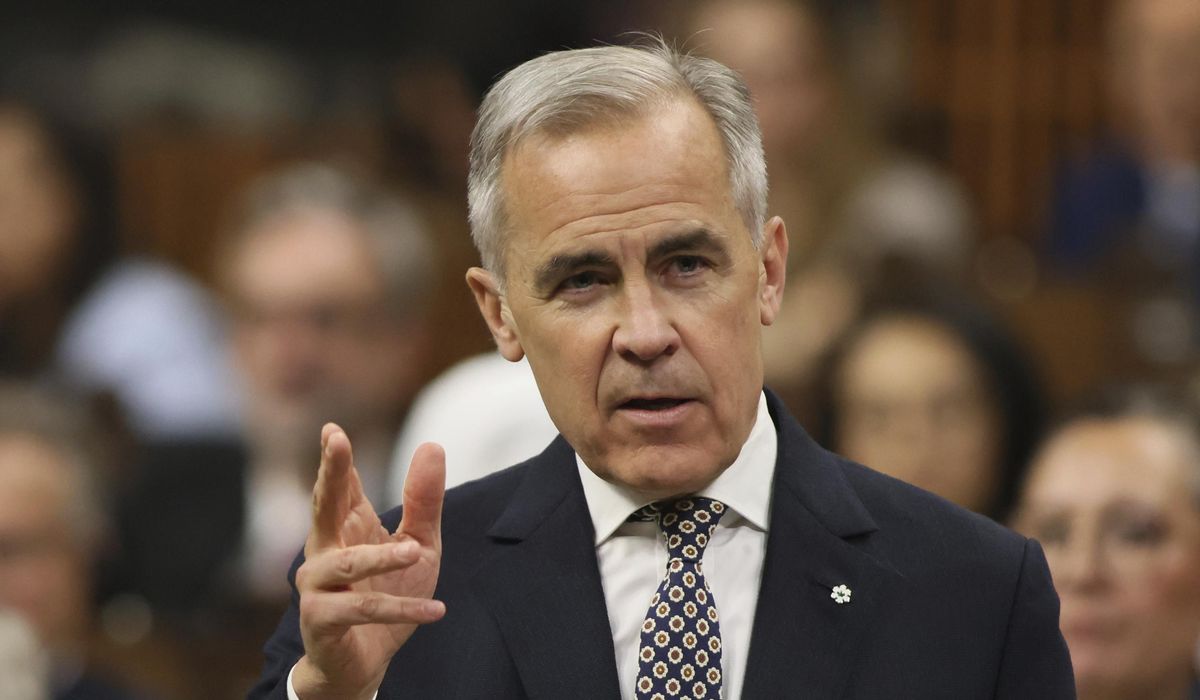


Canadian Prime Minister Mark Carney says his country is making progress in stopping fentanyl and will continue to work with the U.S. on trafficking and other matters ahead of the Aug. 1 tariff deadline set by President Trump.
Mr. Trump said late Thursday he planned to impose a 35% tariff on Canadian goods as part of his aggressive trade plan, sparking a response from the prime minister, who’d been working toward a July 21 deadline for a trade deal with his neighbor.
“Throughout the current trade negotiations with the United States, the Canadian government has steadfastly defended our workers and businesses. We will continue to do so as we work towards the revised deadline of August 1,” Mr. Carney said late Thursday on X.
“Canada has made vital progress to stop the scourge of fentanyl in North America,” he said. “We are committed to continuing to work with the United States to save lives and protect communities in both our countries.”
Mr. Trump announced the planned tariff in a letter posted to Truth Social.
The president said Ottawa imposes too many barriers on U.S. goods and needs to step up its fentanyl enforcement, although the majority of the drug is trafficked up from Mexico.
In his letter, Mr. Trump said the new tariffs were separate from sector-specific tariffs that hit things like automobiles, steel and aluminum.
An administration official said the new tariff of 35% is expected to apply to goods currently under a fentanyl-related tariff of 25%, and which are not exempt under the U.S.-Canada-Mexico Agreement. But the official stressed that the situation remains fluid.
The U.S. trade deficit with Canada was $63.3 billion in 2024, meaning Canadian producers sold a higher value in goods to the U.S. market than American producers sent to Canadian consumers.
Mr. Trump does not like trade deficits and is trying to close them by imposing tariffs, which are duties on foreign-made goods brought into the U.S., on dozens of trading partners.
In the case of Brazil, Mr. Trump used tariffs in part to punish the South American country for its prosecution of former President Jair Bolsonaro. The U.S. has a trade surplus with Brazil.
Mr. Trump’s tariff decision on Canada roped in the non-trade issue of fentanyl, a synthetic opioid that is fueling drug-overdose deaths in the U.S.
The Dow Jones Industrial Average dropped more than 200 points, and the S&P 500 retreated from its winning streak at the opening bell Friday as investors grappled with Mr. Trump’s trade moves.
Mr. Trump’s aggressive moves toward Canada sparked resentment among the populace up north and sparked a “Buy Canadian” movement.
Mr. Carney has tried to tap into that spirit as he contends with economic fallout from trade disputes with the U.S.
“We are building Canada strong,” Mr. Carney said. “The federal government, provinces and territories are making significant progress in building one Canadian economy. We are poised to build a series of major new projects in the national interest. We are strengthening our trading partnerships throughout the world.”
• Tom Howell Jr. can be reached at thowell@washingtontimes.com.
